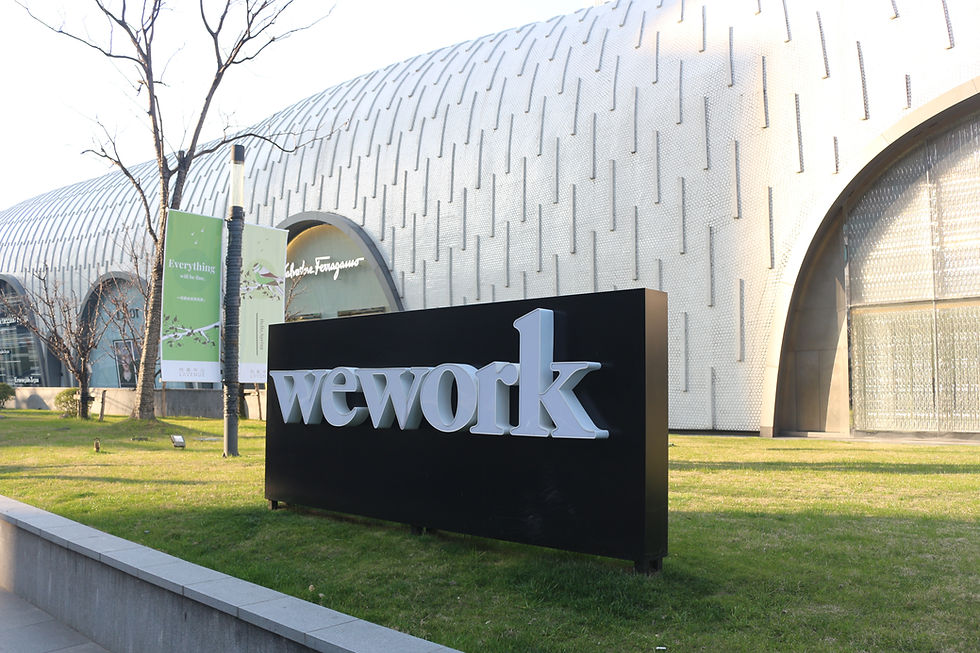WeWork Bankruptcy Restructuring: A New Era in Coworking
- Rahul Anand
- May 31, 2024
- 3 min read

As per reports available over the internet and social media, WeWork has entered a pivotal phase with its bankruptcy restructuring. The coworking giant, known for its rapid expansion and subsequent financial troubles, has now adopted a leaner model. This restructuring plan promises a fresh influx of capital and the erasure of around $4 billion in debt. Amid the changing landscape of office work, this move could herald a new era for coworking spaces. This article delves into WeWork's restructuring and what it means for the future of coworking.
WeWork's Bankruptcy Plan
During a final hearing on its bankruptcy plan, reports indicate that WeWork received court approval to move forward with a revamped structure. The coworking pioneer, which previously operated in over 500 locations globally, will now focus on approximately 330 locations. This strategic downsizing is expected to save around $12 billion in rent obligations. Additionally, the company anticipates exiting bankruptcy by mid-June, marking a significant milestone in its journey.
Reasons Behind the Bankruptcy
Factors such as high interest rates and the COVID-19 pandemic have exacerbated WeWork's financial difficulties. Like many other businesses, WeWork struggled to adapt to the work-from-home trend, leading to an excessive number of unoccupied leases and flexible office spaces. Lease costs alone made up two-thirds of its operating expenses in 2023.
The Shift in Business Model
WeWork's restructuring plan has closely examined its lease agreements, leading to various amendments, assumptions, and exits. Significant changes include converting dozens of office leases into revenue-sharing agreements, a model adopted by other coworking companies. Such agreements distribute risk more evenly, providing WeWork with a more sustainable operational approach moving forward.
WeWork bankruptcy restructuring - Reducing Footprint in Key Markets
WeWork's new strategy primarily focuses on reducing its footprint in oversaturated markets. By occupying fewer floors within the same building or eliminating multiple locations in close proximity, the company aims to streamline its operations. This approach aligns with its broader objective of becoming a more resilient and rightsized company.
Global Impact and Adjustments
Although WeWork's primary restructuring efforts focus on the US and Canada, the company has also been renegotiating leases in international markets such as Singapore, Kuala Lumpur, Bangkok, Paris, and others. By working closely with landlords, WeWork has managed to negotiate favorable lease terms, leveraging the current market conditions that are less favorable for office landlords.
Positive Projections and New Ownership
WeWork's plan involves new financing of around $400 million, with Yardi Systems becoming the majority owner as WeWork transitions back into a private company. Despite some scepticism, WeWork's global head of real estate remains optimistic about the future, emphasizing the increasing demand for flexible office spaces.
The Future of Coworking
The restructuring coincides with a broader trend where many office workers resist a full-time return to traditional office settings. There is also a noted increase in loneliness among remote workers, a problem that coworking spaces like WeWork aim to alleviate. These factors position WeWork to potentially address evolving needs within the workforce landscape.
WeWork bankruptcy restructuring - Challenges Ahead
Despite the optimistic projections, WeWork faces numerous challenges as it implements its streamlined operations. The execution of this plan will be crucial in determining whether WeWork can maintain its position as a leader in the coworking space industry.
The WeWork bankruptcy restructuring symbolizes a significant transition for the company and possibly the coworking industry as a whole. With fewer locations, a reduced debt burden, and a new business model, WeWork is poised to test its hypothesis that flexibility is indeed the way forward for office spaces. As the company exits bankruptcy, it will enter a new era, one that could redefine coworking's role in the modern work environment.





















Comments